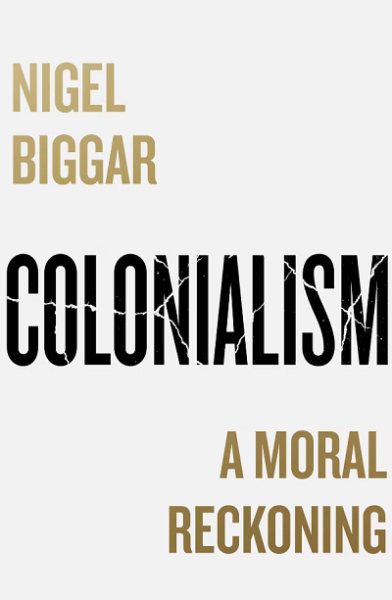Outside Sub-Saharan Africa, Homo sapiens are vermin, in the Australian sense — an introduced species with no co-evolved local predators. That means that their strongest selection pressures — both genetic and cultural — have almost always been about dealing with other humans.
We are the cultural species par excellence. Cultures can be reasonably thought of as collections of life-strategies. Culture tends to be persistent — aspects of culture can be highly persistent.
It is worth keeping in mind that genetic selection can occur surprisingly quickly — i.e., in a relatively short number of generations, depending on the intensity of the selection pressures. A very clear example of this is the evolution of lactase persistence in pastoralist, or agro-pastoralist, populations. (The decades-long experiment in domesticating silver foxes is an extreme example.)
The great advantage of cultural selection is that it is faster than genetic selection but culture still has to show some “stickiness”, some persistence, to be useful. Especially in the evolution of signals, norms and social strategies.
The regions where the local physical environment has been successfully managed longest — or most thoroughly — are Europe, particularly North-West Europe, East Asia and India (especially by high-jati Indians). So, those are the areas where natural and cultural selection has been most focused on selection for dealing usefully with other humans. Those populations have also been the most successful in dealing with the modern world, wherever they go. This hardly seems a coincidence.
The regions where dealing with the local physical environment has been most salient are Sub-Saharan Africa — all those co-evolved parasites, pathogens, predators and mega-herbivores — and Australia — which is full of deserts and spiky things likely to poison you. Much of Africa is also semi-desert forager lands, while the tsetse fly stopped the central African plains generating the equivalent of the connecting — for good or ill — pastoralist cultures of the Eurasian steppes. Both continental-scale regions therefore historically had low human population densities.
The consequence in Africa was that Sub-Saharan Africa has, for millennia, been a region of endemic slavery. Labour was more valuable than land, which led — as it usually did historically — to labour bondage: the violent/coercive extraction of labour’s scarcity value. In this case, the low population density meant that folk were regularly seized and transported, thus requiring the level of domination for folk to be moved at will — i.e., slavery rather than some form of serfdom.
Increased selection to deal with the physical environment meant comparatively less selection to deal with other humans. Sub-Saharan African and Australian Aboriginal populations have been rather less successful at dealing with the modern world than have other populations. (Claims about the success of recent African immigrants seem to be overstated.) The key element of the modern world is domination of social outcomes by human interactions to the greatest extent yet achieved in history. Again, that relative lack of success hardly seems like a coincidence.
Yes, it is true that selection for transportation across the Atlantic as slaves was negative in all sorts of senses. The churn of slavery massively undermined cultural transmission, the selection was for physical robustness and, if anything, against executive functions (which are highly heritable). Nevertheless, with the partial exception of recent African immigrants — who are selected for initiative and education — both populations have been markedly less successful than other groups.
There are certainly factors which affect that either way. Not inflicting on Australian Aborigines the dual metabolic disasters of the farming and processed-food revolutions at the same time would be good. Not under-policing the localities in which folk live is also good.
Nevertheless, there is no reason to think that capacities — which are a genetic, epigenetic and cultural matter — will be evenly distributed across all populations. Indeed, we have very good reasons to think that that will not be the case, due to the variations in selection pressures — whether genetic, environmental or cultural, including interactions between the three. It is not a good idea, for instance, to spend 1400 years marrying your cousins.
Even when means and medians are the same in the distribution of some trait across groups, differences in the size of tails — i.e. the number of extreme outliers — can lead to differences in the distribution of outcomes. Any population with a persistently larger tail of high physical robustness and lower executive functions — which can be an ethno-racial pattern but also a class pattern — will tend to have higher rates of violent crime. Conversely, any population with a smaller tail of lower executive functions — for example, East Asians with a long history of underclass males not breeding but selection for reproductive success through passing examinations and cooperative farming — will tend to have lower rates of violent crime.
Sufficient variance in traits — so having a larger “right tail” of positive-for-human-flourishing characteristics — can be enough on its own to increase a group’s success. Tail effects matter.1
The persistence of gene flows across human populations does undermine any strong notion of human subspecies among Homo sapiens. It does not imply equal distributions of capacities across human populations.
Hence, evolutionary thinking is neither comfortable nor comforting.
1. Given that human males — like males across species — have a flatter distribution of traits — so more positive and negative outliers — having equal numbers of males and females at the top ends of hierarchies suggests some level of discrimination against males. Conversely, having female prison populations begin to approach male populations in size suggests some level of discrimination against, even persecution of, females.












